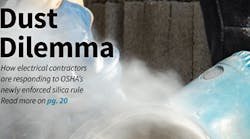Follow these tips and you'll be more safe around flammable materials.
- Use the smallest work containers possible. It's much safer to accidentally knock over a small container of flammable liquid than a big one. Fume output from a small container is also less.
- Cover containers when not immediately using them. This reduces the fume emissions, chance of contamination, and likelihood of spills.
- Empty work containers into disposal containers, not the main storage container for the material. Exception: Your work procedure may instruct you to do this. The reason for this rule is to prevent contamination of the main storage container with unknown materials that end up reacting or causing other problems.
- If there's a spill, stop and clean up immediately if it's small. By doing this, you will limit the vapor concentrations, slipping hazards, and collateral exposure.
- Don't try to clean up a large spill. Instead, leave the area and warn others on your way out. Alert first responders and then your supervisor.


